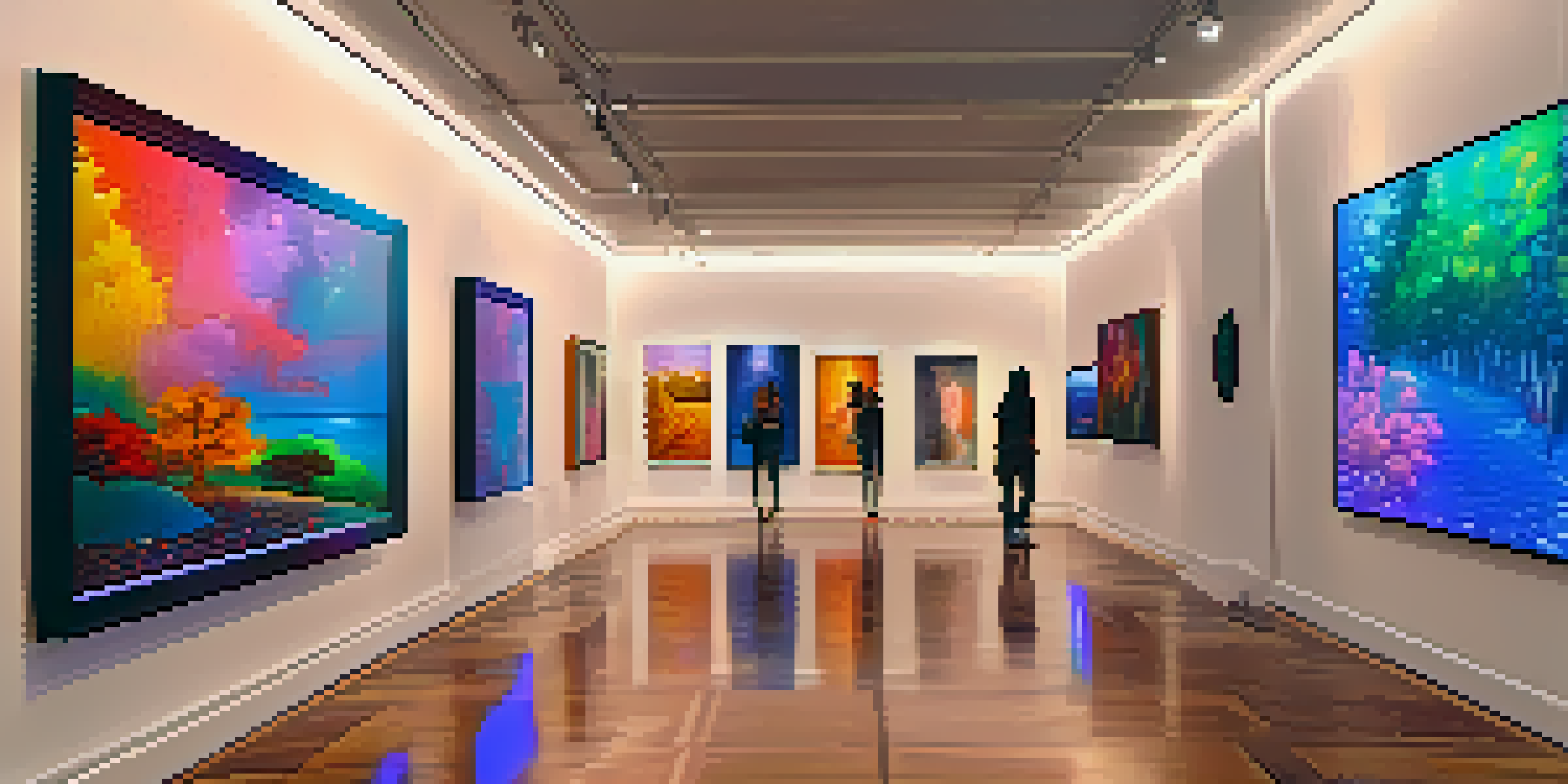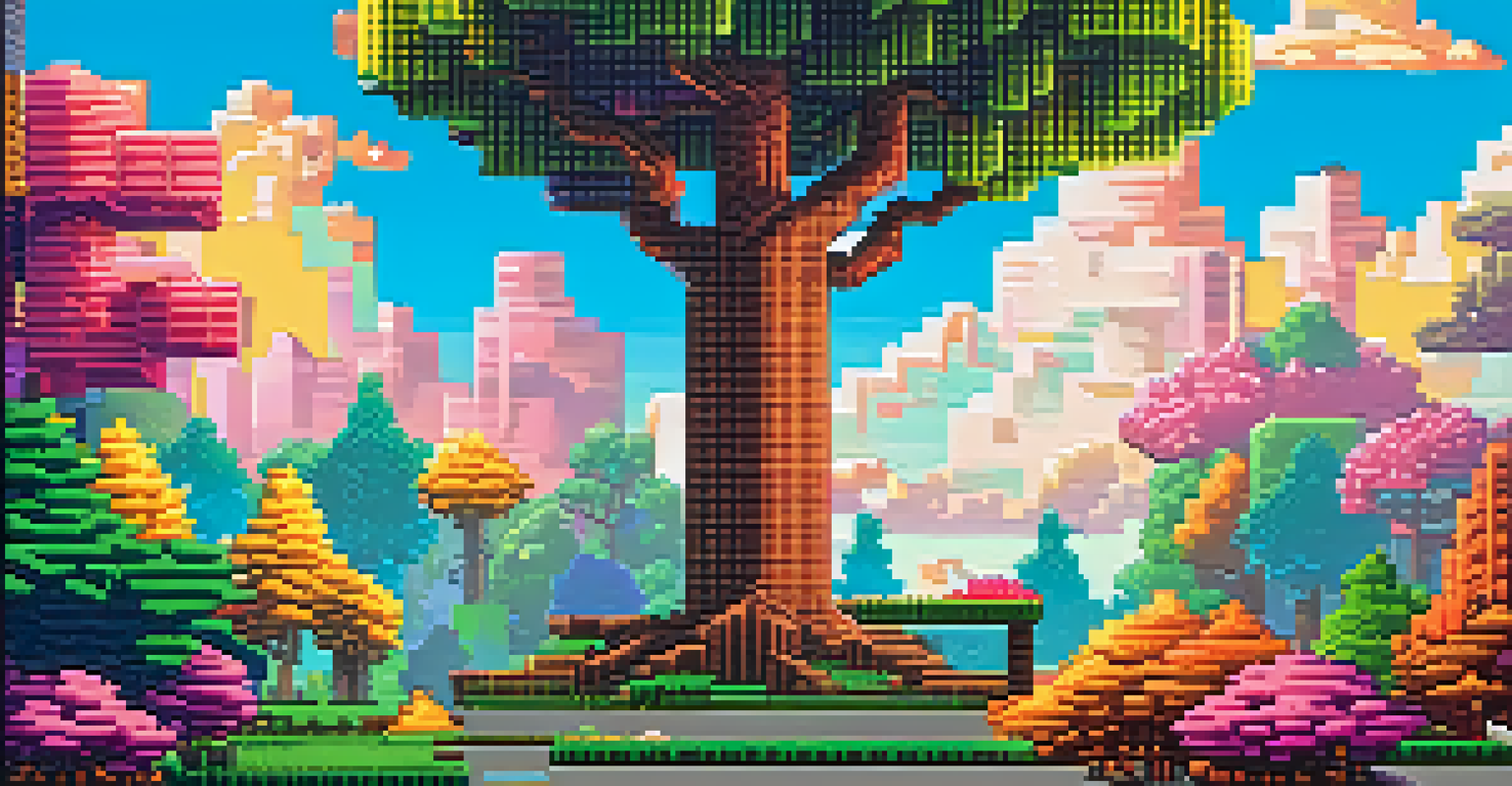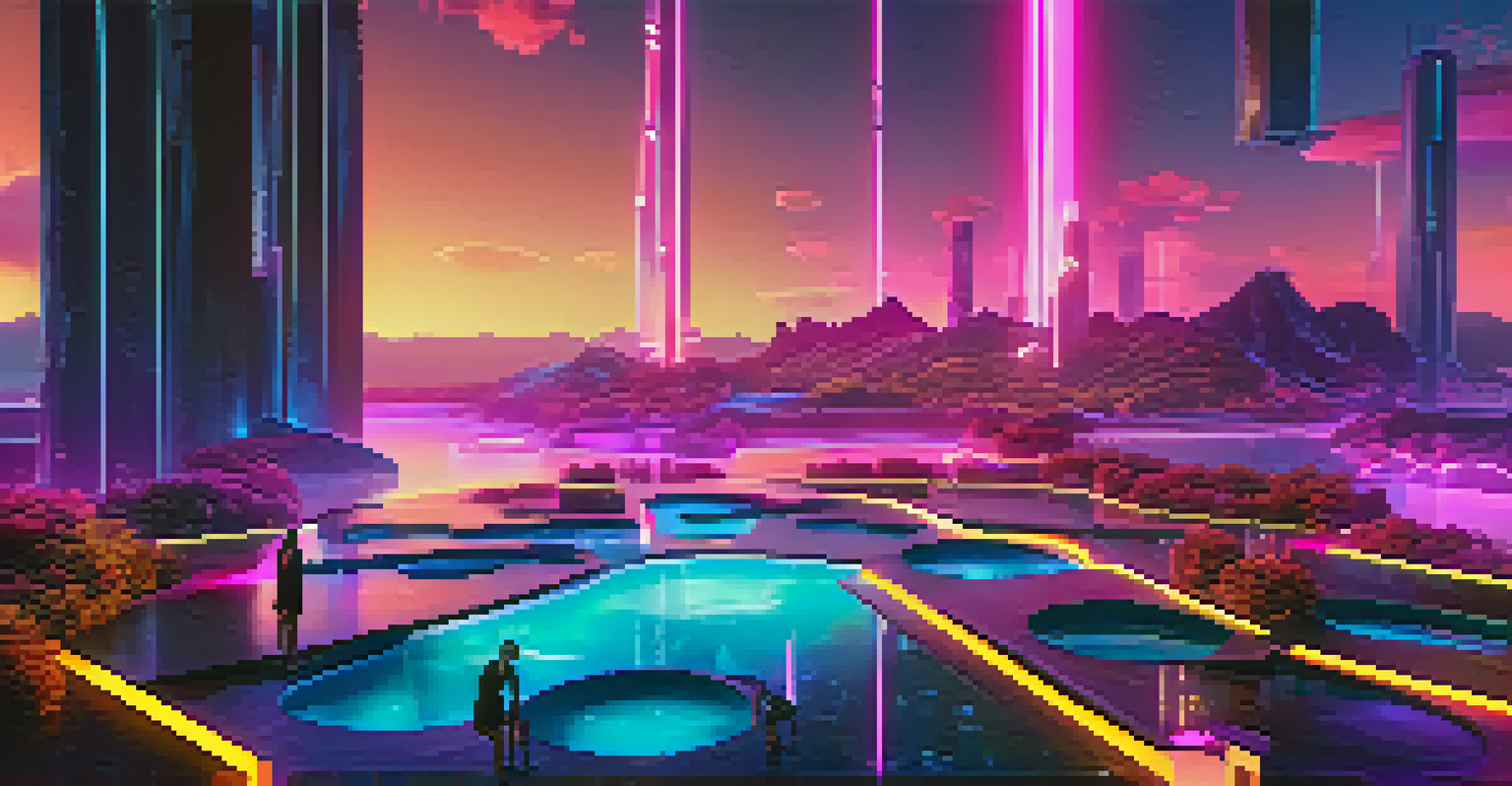Aesthetic Diversity: Different Styles in the NFT Space

Understanding Aesthetic Diversity in NFTs
Aesthetic diversity refers to the wide range of artistic styles found in the NFT space. Just like a vibrant art gallery, NFTs showcase everything from pixel art to hyper-realistic digital paintings. This variety not only reflects the creativity of artists but also caters to the diverse tastes of collectors and enthusiasts alike.
Art is not freedom from discipline, but disciplined freedom.
NFTs offer a platform for artists to express their unique visions, breaking traditional boundaries. By embracing different styles, artists can engage audiences on multiple levels—emotionally, intellectually, and visually. This diversity is crucial in making the NFT landscape rich and engaging, ensuring that there’s something for everyone.
Moreover, aesthetic diversity encourages innovation within the digital art community. As artists experiment with new techniques and concepts, they push the envelope, inspiring others to think outside the box. This collaborative spirit fuels the evolution of art in the NFT space, making it a thrilling world to explore.
The Rise of Pixel Art in NFTs
Pixel art has made a significant resurgence in the NFT space, reminiscent of the early days of video gaming. This style, characterized by its blocky, retro aesthetic, appeals to nostalgia and simplicity. Artists are creating stunning works that resonate with both gamers and art lovers, often selling for impressive sums.

One of the most famous examples is CryptoPunks, a series of 10,000 unique pixelated characters that have become iconic in the NFT world. These digital collectibles are not just art; they represent a cultural phenomenon that has sparked interest in pixel art. The simplicity of the medium allows for creativity within constraints, making it an intriguing challenge for artists.
Aesthetic Diversity Enriches NFTs
The wide range of artistic styles in NFTs, from pixel art to 3D animation, ensures that there’s something for every collector.
As the NFT market continues to grow, pixel art stands out for its accessibility. Many aspiring artists find it easier to create in this style, leading to a vibrant community that shares tips and techniques. This democratization of art creation is vital for the ongoing evolution of NFTs, as it opens doors for new voices to be heard.
Exploring 3D Art and Animation in NFTs
3D art and animation have carved out a significant niche within the NFT landscape. Artists are utilizing advanced software to create immersive, dynamic pieces that captivate audiences. These works often bring a sense of depth and realism, taking digital art to new heights.
Creativity takes courage.
For instance, platforms like Decentraland and Cryptovoxels allow artists to create 3D environments that can be explored by users. This interactivity adds an exciting layer to the art, transforming it from a static image into an experience. Collectors are not just buying art; they are investing in virtual worlds that they can navigate and interact with.
The rise of virtual reality (VR) and augmented reality (AR) technologies further amplifies the potential of 3D NFTs. As these technologies become more mainstream, the possibilities for artists and collectors will expand, creating a more engaging and immersive art experience. This shift not only enhances the aesthetic appeal but also elevates the way we interact with art in the digital realm.
The Influence of Abstract Art in NFTs
Abstract art is gaining traction in the NFT space, offering a departure from traditional representation. This style invites viewers to engage with art on a conceptual level, allowing for personal interpretation and emotional response. Many artists are exploring vibrant colors and bold shapes to create pieces that provoke thought and conversation.
One notable example is the work of artists like Pak and XCOPY, who utilize abstract forms to convey deeper meanings about technology, society, and the human experience. Their pieces often challenge perceptions and encourage viewers to reflect on the rapidly changing digital landscape. This intellectual engagement is part of what makes abstract NFT art so compelling.
Emerging Styles Drive Innovation
As artists experiment with new techniques and technologies, they push the boundaries of creativity, fostering a rich environment for innovation in the NFT space.
Moreover, abstract art's flexibility allows for a diverse range of expressions within the NFT ecosystem. Artists can experiment with different techniques, combining digital tools and traditional art methods. This creative freedom fosters a rich environment where innovation thrives, making abstract art a vital component of the aesthetic diversity in NFTs.
Photography's New Frontier: NFTs
Photography has found a fresh platform in the NFT space, transforming how photographers share and monetize their work. By minting their images as NFTs, photographers can establish ownership and authenticity, which is crucial in a world saturated with digital content. This shift allows them to connect directly with collectors, bypassing traditional gatekeepers.
One striking example is the work of renowned photographer Beeple, whose NFT piece 'Everydays: The First 5000 Days' sold for a staggering $69 million. This sale not only highlighted the potential of photography in the NFT market but also opened doors for emerging photographers to showcase their portfolios. As a result, many are exploring this new medium to share their unique perspectives.
NFT photography also introduces innovative ways to engage with audiences. Photographers can incorporate multimedia elements, such as video or sound, to enhance their storytelling. This evolution enriches the viewer's experience and showcases the versatility of photography in the digital age.
The Role of Generative Art in NFTs
Generative art is a fascinating style that leverages algorithms and code to create unique pieces. Artists write code to produce artworks, often resulting in complex patterns and designs that are impossible to replicate manually. This intersection of technology and creativity highlights the innovative spirit of the NFT space.
One prominent example is the work of artist Tyler Hobbs, who uses generative algorithms to craft intricate designs that captivate viewers. The randomness and variability in generative art ensure that each piece is one-of-a-kind, appealing to collectors who value exclusivity. This originality is a key selling point in the NFT market.
NFTs Transform Traditional Art Forms
Photography, comics, and generative art are evolving through the NFT medium, providing new revenue streams and engaging experiences for both artists and audiences.
Furthermore, generative art challenges traditional notions of authorship and creativity. With the artist serving as a facilitator, the process becomes collaborative between human intention and machine execution. This dynamic redefines what it means to create art, making generative pieces a significant part of the aesthetic diversity in the NFT space.
Comic and Illustration Styles in NFTs
Comic and illustration styles are making waves in the NFT world, appealing to fans of graphic storytelling and visual narratives. Artists are leveraging the NFT format to bring their comic characters and stories to life, creating engaging, collectible pieces that resonate with audiences. This fusion of traditional comic art and digital innovation is an exciting development.
Platforms like OpenSea and Rarible are filled with unique comic NFTs, from one-off illustrations to entire series. These digital comics not only allow for new storytelling techniques but also create a sense of community among fans and collectors. As artists explore this medium, they are redefining the boundaries of comic art in the digital age.

Moreover, NFTs provide a new revenue stream for comic artists, who can earn royalties from secondary sales. This financial incentive encourages more creators to explore the NFT space, enriching the diversity of styles available. The impact of comics and illustrations on the NFT landscape shows how traditional art forms can evolve in exciting ways.
The Future of Aesthetic Diversity in the NFT Space
As the NFT market continues to expand, the future of aesthetic diversity looks promising. Artists are constantly innovating and experimenting with new styles, pushing the boundaries of what digital art can be. This ongoing evolution ensures that the NFT space remains dynamic and engaging for both creators and collectors.
With emerging technologies like artificial intelligence and machine learning, we can expect even more groundbreaking styles to emerge. These tools will enable artists to create complex, interactive pieces that challenge our perceptions of art. The possibilities are endless, and the intersection of technology and creativity will undoubtedly shape the future of NFTs.
Ultimately, the growth of aesthetic diversity in the NFT space reflects a broader cultural shift towards valuing creativity and innovation. As artists continue to explore new mediums and styles, they contribute to a rich tapestry of digital art that captivates and inspires. This diversity not only enriches the NFT ecosystem but also invites more people to engage with art in meaningful ways.